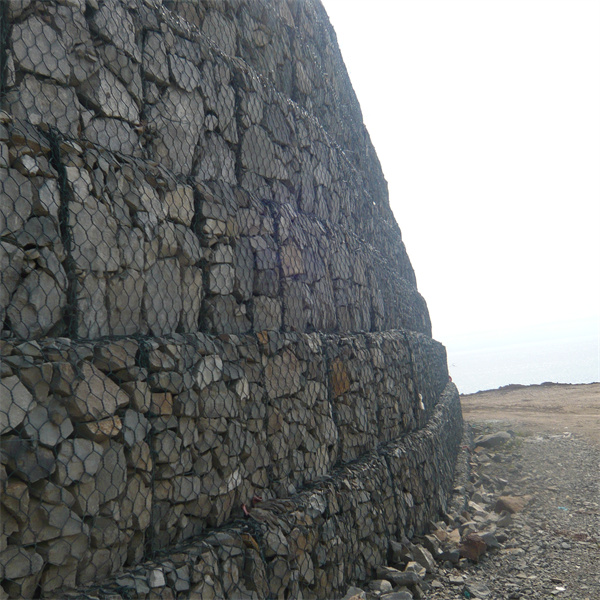set. . 29, 2024 06:33 Back to list
China Gabion Barrier Solutions for Effective Landscaping and Flood Control
The Emerging Role of China in Gabion Barrier Technology
Gabion barriers, constructed from wire mesh filled with rocks or concrete, have become increasingly vital in various engineering and environmental applications. Among the many countries harnessing this technology, China has emerged as a significant player, demonstrating innovation and scalability in the design and implementation of gabion barriers.
Understanding Gabion Barriers
Gabion barriers are versatile solutions for preventing soil erosion, controlling water flow, and providing structural support in various landscapes. The foundations of gabion technology date back thousands of years; however, modern applications have significantly expanded due to growing environmental challenges and the need for sustainable construction methods.
In China, the application of gabion barriers has gained traction as urbanization accelerates, and infrastructure demands surge. These barriers serve multiple purposes, including flood control, slope stabilization, and ecological restoration, thus aligning with China’s vision of sustainable development.
Advantages of Gabion Barriers
One of the primary benefits of gabion barriers is their adaptability to various environments. They can be constructed to suit specific geographical and geological conditions, making them ideal for China's diverse landscapes, from mountainous regions to flat plains. Additionally, gabions have excellent drainage properties, which help to mitigate pressure buildup behind the structure, reducing the risk of structural failure.
Moreover, gabion barriers are cost-effective. The materials used for filling—natural stones or recycled concrete—are often locally sourced, which minimizes transportation costs and environmental impact. The ease of assembly further supports their appeal; gabions are typically prefabricated, allowing for quick installation on-site. This efficiency is particularly beneficial in regions prone to natural disasters, where rapid deployment is critical.
China's Technological Innovations
china gabion barrier

China’s approach to gabion technology has been characterized by significant innovations in both material science and construction methodologies. Research and development in the field have led to the introduction of corrosion-resistant coatings for mesh materials, enhancing the lifespan of gabion structures even in harsh environments.
Furthermore, China has integrated digital technologies, such as Autonomous Drones and Geographic Information Systems (GIS), into the construction and maintenance processes of gabion barriers. These tools facilitate accurate site assessments, ensuring optimized designs that consider local topography and hydrology, thus enhancing the efficacy of the barriers.
Policy and Sustainability
The Chinese government has recognized the benefits of gabion technology, evidenced by its inclusion in various environmental management and infrastructure development policies. Programs aimed at combating soil erosion and managing waterways frequently advocate the use of gabion barriers. This aligns with China’s broader ecological civilization strategy, which emphasizes sustainable development practices that protect the environment while supporting economic growth.
Furthermore, gabion barriers contribute positively to biodiversity. They can act as habitats for small animals and plants, promoting ecological balance. In areas where urban encroachment threatens natural habitats, the strategic placement of gabion barriers can aid in preserving biodiversity.
The Future of Gabion Barriers in China
Looking ahead, the potential for gabion barriers in China appears promising. There are ongoing discussions about the integration of smart technologies—such as sensors for monitoring structural integrity and environmental conditions—into gabion designs. This could lead to proactive management and maintenance, ensuring long-term sustainability and safety.
In conclusion, the role of gabion barriers in China is multifaceted, serving as a crucial tool in environmental management and sustainable infrastructure development. As the country continues to innovate and expand its use of this technology, gabion barriers may play an increasingly significant role in addressing the challenges posed by rapid urbanization and climate change. Through continued investment in research and infrastructure, China positions itself as a leader in gabion technology, setting an example for other nations to follow in the pursuit of sustainable development.
-
Why PVC Coated Gabion Mattress Is the Best Solution for Long-Term Erosion Control
NewsMay.23,2025
-
Gabion Wire Mesh: The Reinforced Solution for Modern Construction and Landscape Design
NewsMay.23,2025
-
Gabion Wall: The Flexible, Seismic-Resistant Solution for Modern Landscaping and Construction
NewsMay.23,2025
-
Gabion Wall Solutions: The Durable, Decorative, and Affordable Choice for Every Landscape
NewsMay.23,2025
-
Gabion Basket: The Durable and Flexible Alternative to Traditional Retaining Walls
NewsMay.23,2025
-
Gabion Basket: The Proven Solution for Slope Stability and Flood Control
NewsMay.23,2025
-
Versatility of Chain Link Fence Gabion
NewsMay.13,2025






